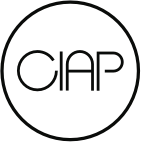Kunstverein
Publications
- The black gold cookbook,
— Barbara Prada - Antonio Vega Macoela's Incendio in Art Viewer,
— Art Viewer - Incendio by Antonio Vega Macotela,
— Alicja Melzacka - Where widowed objects meet orphaned ideas featured in BLOK Magazine,
— BLOK Magazine - DEMEURE ET CIVILISATION ,
— Jean-Baptiste Carobolante - l'art même - Martin Belou featered in The Word Magazine,
— Emi Vergels - Martin Belou: Objects, Love and Patterns,
— Dagmar Dirkx - Laurie Charles: Le Chalet,
— Dagmar Dirkx - Martin Belou at CIAP featured on Art Viewer,
— Art Viewer - Martin Belou featured on KubaParis,
— KubaParis - Laurie Charles featured in Subbacultcha,
— Elice Spillebeen
Laurie Charles featured in Subbacultcha
author: Elice Spillebeen
download: artikel-subbacultcha-laurie-charles.jpg
Artist
Laurie Charles
Interview by Elice Spillebeen
After graduating from the school of fine arts in Bordeaux, Laurie Charles moved back to Brussels where she’s now living and working as a video-artist/painter. For the past two years she’s focused on topics concerning ecology and utopias, and the position of humankind within.
We were curious where her fascination for these topics came from so we paid her a visit and had a chat about it.
You make sculptures as well as paintings, texts and movies. How do they all relate to each other?
For me, all these mediums are complementary to each other; to create my movies I use writings, sculptures and paintings. Today I mostly direct movies and make paintings on textile, but these are never separate from each other. My paintings always have a connection with film. When I started practicing art as a student my main focus was movies. I only had a small 15 square metre flat, and in there I created my first movie set-up with a green screen behind my bed. When I moved to a bigger flat I started building set designs for films and began making sculptures, paintings and objects. Ever since I’ve continued discovering all these mediums.
What’s the main focus in your work?
My work doesn’t focus on one thing; for me it’s more about a way of focusing on things with a certain point of view. I work around subjects that affect me and I’m constantly searching for stories to rewrite. The last two years, I mainly concentrated on ecology and utopia topics but even within these subjects there’s a gigantic space with many possibilities.
In your exhibition in CIAP in Hasselt, you examine the concept of ‘going back to nature’. What does that mean to you?
It can have multiple interpretations according to me. From leaving the city for the country side to quitting the busy life for a life of freedom. I see it as an act of resistance against certain kinds of rules in society where going back to nature can be an open proposition to live closer to the natural cycles, to grow your own food etc.
How would you link your expo to the contemporary issues around ecology? Are you concerned about it?
I’m quite concerned about it, yes. Since we named our century ‘Anthropocene’ everybody is aware of the fact that we are clearly living in a world that is suffering from our domination. Though in my creation I’m not specifically talking about the larger global ecological crisis, but more about my surroundings: Brussels, the people I live with, the place I grew up in, etc. It’s within that context that I want to explore the question: what’s my position towards what we call ‘nature’?
What are you working on now?
I’m mostly working on shooting preparation of my movie for the show in CIAP. Besides that, I’m also working on a project together with the w.o.r.k? collective in France. We’re creating a sciencefiction movie that is exploring questions of transmissions and memory through practices of collective narratives and group talks within different communities.

